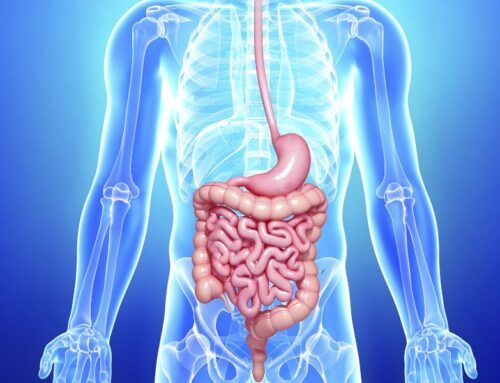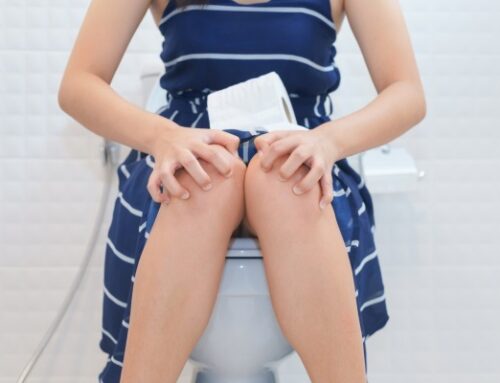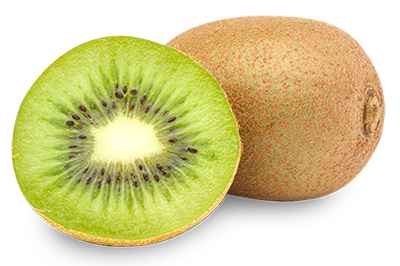What does constipation look like in children?
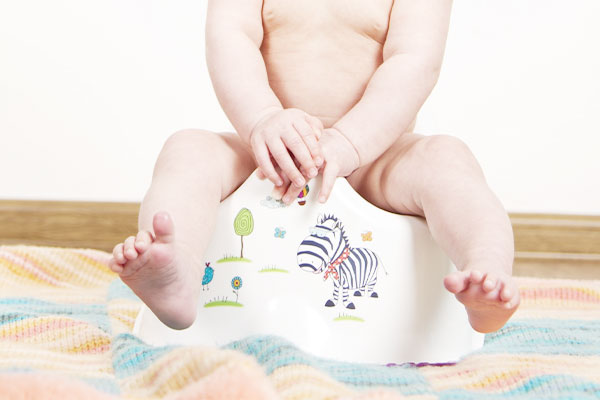
Constipation is where it is hard to poo, the poo itself is hard and lumpy and/or there are infrequent trips to the toilet to do number 2s.
If your child is constipated, you may notice them:
- move in a way that suggests they are holding in their poo, for example standing on tiptoes, clenching their bottom, or doing other unusual, dance-like behaviours
- show signs of pain or cry when going to the toilet
- have hard, dry or small poo (like pebbles)
- have bright red blood around the poo (from small tears around the anus)
- complain of tummy pain
- experience urinary tract infections or wet the bed or their pants unusually
- have poo in their pants or ‘skid marks’ (soiling).
What is the prevalence in children?
Constipation is very common in children and can affect up to 30% of kids [1]. It is especially common during the toilet-training years (2 – 4 years old) when kids encounter the scary toilet for the first time [2].
What are the causes of constipation in children?
In almost all cases of constipation (approx. 95%), no “organic cause” can be found, and this is known as “functional constipation”. In the remainder of cases, there is an underlying condition causing constipation.
So, chances are if your child is constipated, they will be suffering from functional constipation, and there are many possible reasons this. Often, it is several things, and these can include:
- not drinking enough water
- changes in diet – for example weaning from breastmilk to formula or starting solids
- not having enough fibre (vegetables, fruits, whole grains)
- not doing much physical activity
- not eating and drinking as much as normal, for example when your child is unwell
- a natural tendency to have slower gut movement
Good toileting habits are also essential. If your child ignores the urge to go, doesn’t let all the poo come out when they do go, or doesn’t sit on the toilet regularly, all of which can happen when they don’t want to stop playing, your child can become constipated.
One important factor is known as withholding behaviour. If a child experiences a painful poo or has some other sort of bad experience when trying to poo, then a natural response is to try and avoid or escape that feeling in the future. When they next feel the urge to go, they hold it in – you might find they go and hide from you at this time. Unfortunately, this can result in the poo increasing in size and becoming hard so it is even more painful to pass, so they are even more reluctant next time – this can result in a vicious cycle of withholding. If this withholding pattern persists, then the build-up of stool in the gut can result in a loss of sensation and urge to go.

What can you do to help your child if they are constipated and how to help avoid constipation?
The key things to remember when helping your child to relieve their constipation and maintain bowel regularity is to ensure they are getting good amounts of fluids, fibre and exercise, and encourage good toileting habits.
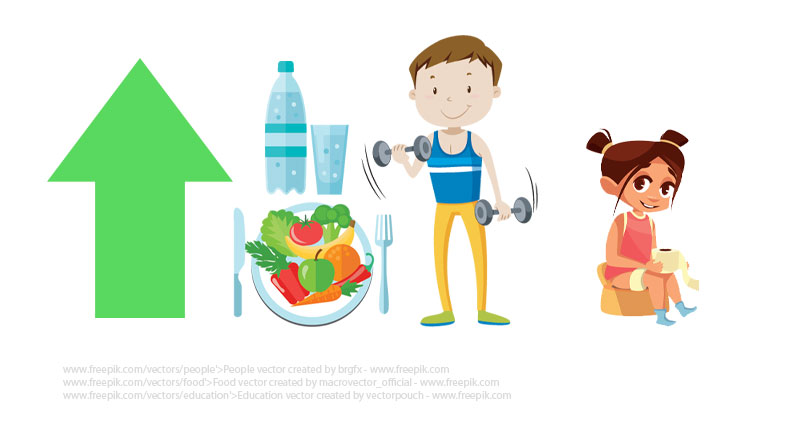
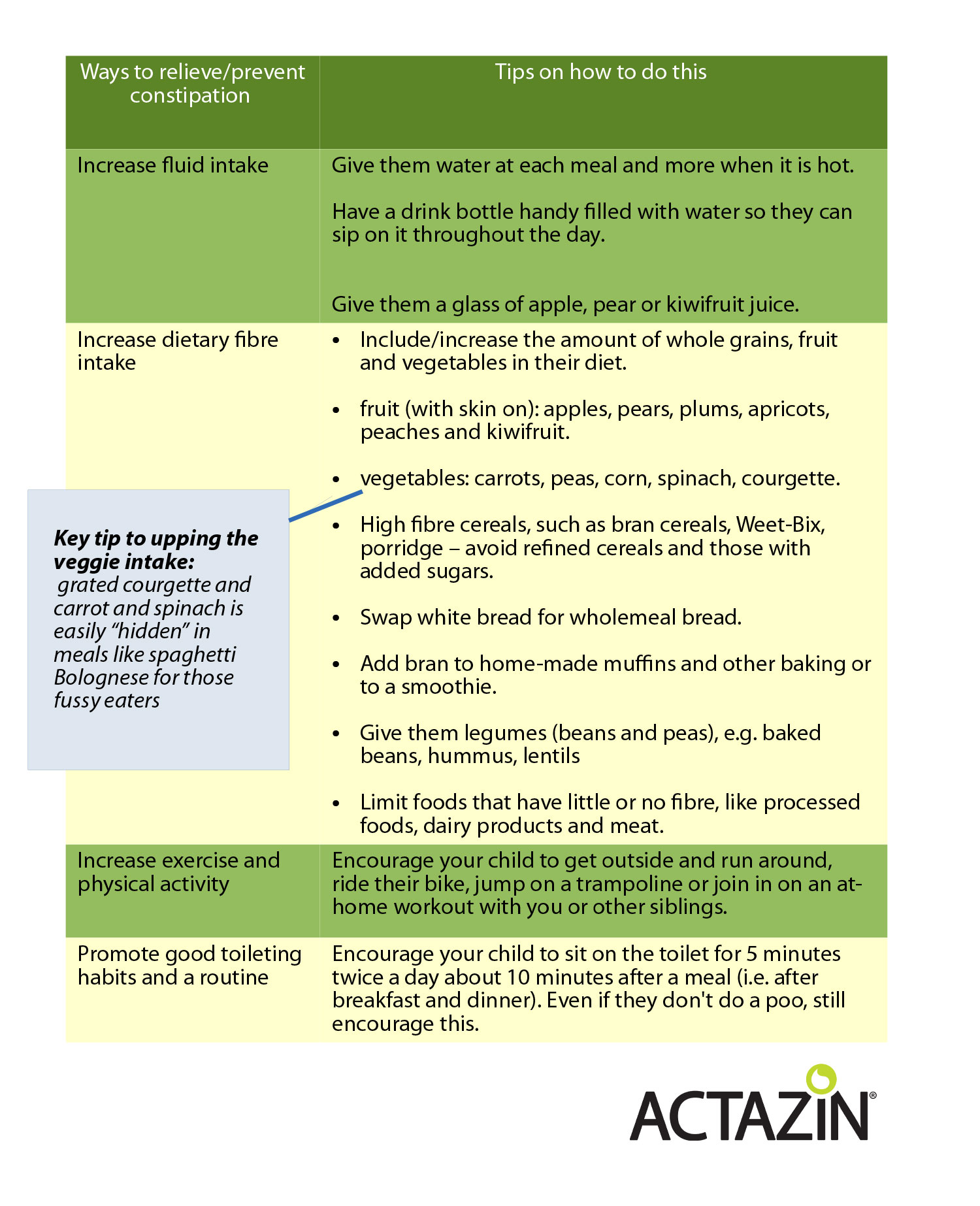
Some key tips for a comfortable toilet experience:
- make sure your child is comfortable on the toilet
- get a stool for them to rest their feet on – this helps to lift their knees up above their hips which makes it easier for the poop to get out.
- use a child’s toilet seat for smaller bottoms – this will help your child feel more relaxed as they are not worried about falling into the toilet
- encourage your child to adopt the thinking position – lean forward and rest their elbows on their knees
- teach them to push their tummy out when trying to poo
- make the toilet a less sterile environment – add some child-friendly books and toys or stickers on the walls
- use a star chart if those sorts of incentives work for your child. Make sure to give stickers/stars even if they don’t do a poo, but still sit on the toilet.
If your child is constipated and the above methods don’t work, then talk to your family GP/healthcare provider.
References:
[1] Koppen, I. J., Lammers, L. A., Benninga, M. A., & Tabbers, M. M. (2015). Management of functional constipation in children: therapy in practice. Pediatric Drugs, 17: 349-360.
[2] Xinias, I., & Mavroudi, A. (2015). Constipation in childhood: an update on evaluation and management. Hippokratia, 19 (1): 11-19.





